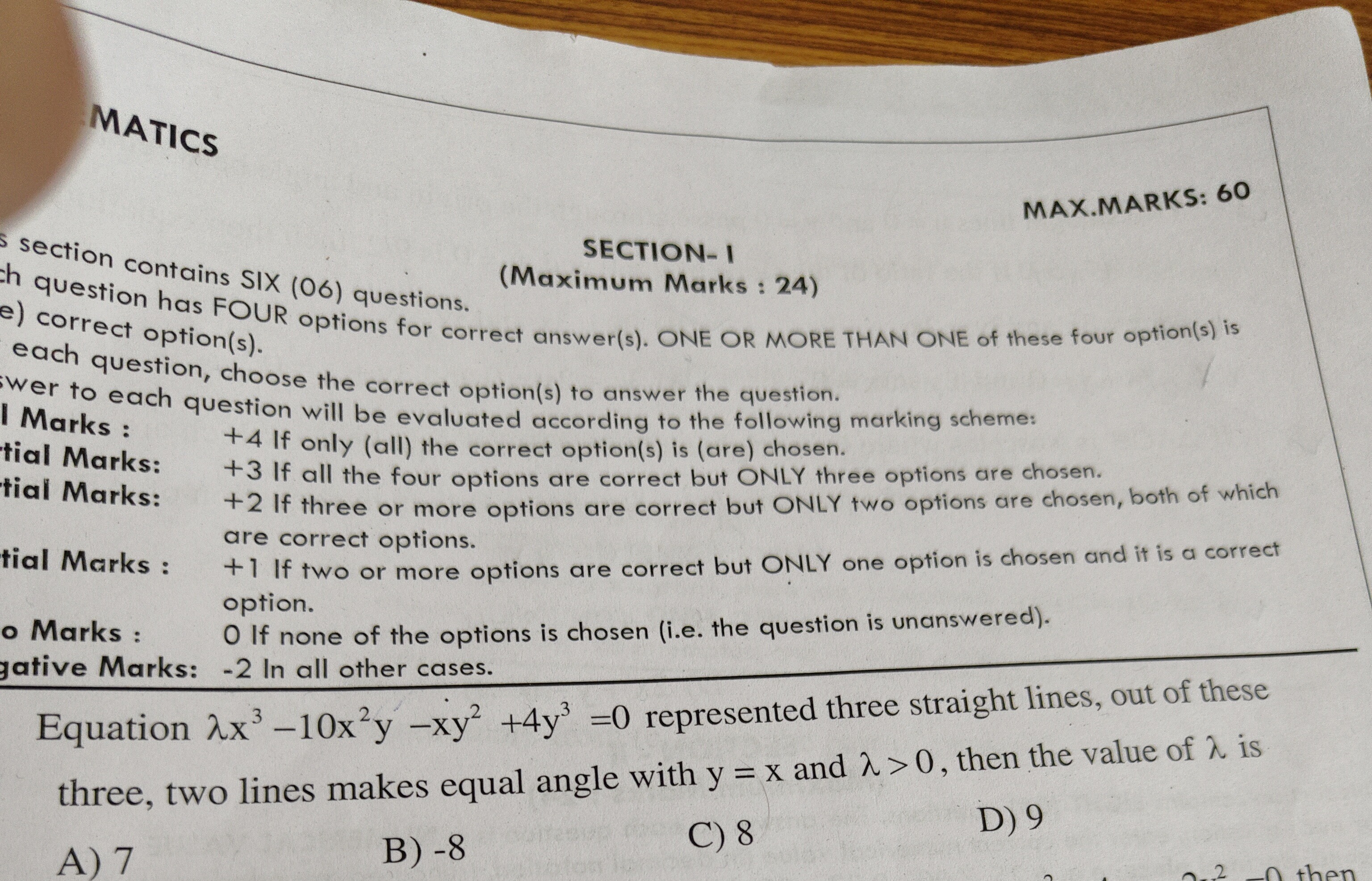Question
Question: Equation $\lambda x^3 -10x^2y -xy^2 +4y^3 =0$ represented three straight lines, out of these three, ...
Equation λx3−10x2y−xy2+4y3=0 represented three straight lines, out of these three, two lines makes equal angle with y = x and λ>0, then the value of λ is

7
-8
8
9
7
Solution
The given equation is λx3−10x2y−xy2+4y3=0. This is a homogeneous equation of degree 3, representing three straight lines passing through the origin.
To find the slopes of these lines, we can divide the equation by x3 and let m=y/x: 4m3−m2−10m+λ=0
Let the roots of this cubic equation be m1,m2,m3. These are the slopes of the three lines. From Vieta's formulas:
- m1+m2+m3=1/4
- m1m2+m2m3+m3m1=−10/4=−5/2
- m1m2m3=−λ/4
The line y=x has a slope mL=1. The condition that two lines make equal angles with y=x implies that for at least one pair of slopes (mi,mj), we must have either mi=mj or mimj=1.
Case 1: m1=m2=m. From Vieta's formulas: 2m+m3=1/4 and m2+2mm3=−5/2. Substituting m3=1/4−2m into the second equation gives 6m2−m−5=0, which factors as (6m+5)(m−1)=0.
- If m=1, then m1=m2=1, and m3=1/4−2(1)=−7/4. The slopes are {1,1,−7/4}. Then m1m2m3=(1)(1)(−7/4)=−7/4. Since m1m2m3=−λ/4, we have −7/4=−λ/4⟹λ=7. This satisfies λ>0.
- If m=−5/6, then m1=m2=−5/6, and m3=1/4−2(−5/6)=23/12. The slopes are {−5/6,−5/6,23/12}. Then m1m2m3=(−5/6)(−5/6)(23/12)=575/432. Since m1m2m3=−λ/4, we have 575/432=−λ/4⟹λ=−2300/432, which is negative and rejected.
Case 2: m1m2=1. From Vieta's formulas: m1+m2+m3=1/4 and m1m2+m3(m1+m2)=−5/2. Substituting m1m2=1 into the second equation gives 1+m3(m1+m2)=−5/2, so m3(m1+m2)=−7/2. Using m1+m2=1/4−m3, we get m3(1/4−m3)=−7/2, which leads to 4m32−m3−14=0. The solutions for m3 are 2 and −7/4.
- If m3=2, then m1+m2=1/4−2=−7/4. With m1m2=1, the quadratic t2+(7/4)t+1=0 has complex roots, which are not valid slopes.
- If m3=−7/4, then m1+m2=1/4−(−7/4)=2. With m1m2=1, the quadratic t2−2t+1=0 gives m1=m2=1. The slopes are {1,1,−7/4}, which is the same as in Case 1, leading to λ=7.
The only valid value for λ satisfying λ>0 is 7.
